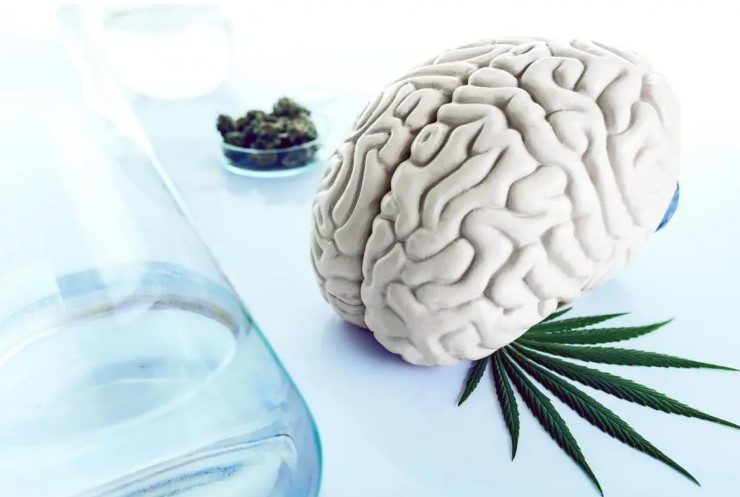Weed is made when the flowers of Cannabis (which is a collection of some psychotropic plants) are harvested and dried. People are increasingly using the term weed to refer to marijuana. Weed, pot, dope, and grass are all terms for marijuana. They are various names for the same substance derived from the cannabis plant. The majority of people consume weed for recreational purposes.
Cannabis is used for its calming properties. It is also used to treat a variety of medical conditions including chronic pain, glaucoma, and low appetite. It can have powerful effects, both positive and negative. The dried leaves, flowers, stems, and seeds of the Cannabis sativa or Cannabis indica plant are known as marijuana. Tetrahydro-cannabinol (THC), as well as other mind-altering chemicals, are found in this plant. Weed is one of the most commonly used drugs in the United States, according to the National Survey on Drug Use and Health. It is popular among young people. 35.4% of young individuals aged 18-25 reported consuming marijuana in the previous year in 2022.
Weed use among middle and high school children has been generally stable since the late 1990s. In 2022, 30.7% of 12th graders reported smoking weed in the previous year, with 6.3% using it every day. Furthermore, many young people consume cannabis products through vaping devices. In 2022, over 20.6% of 12th graders reported vaping marijuana in the previous year, with 2.1% doing so daily. Weed contains mind-altering chemicals that affect both the brain and the body. It has the potential to be addictive, and it may be damaging to some people’s health.
Signs Of Weed Use:
Weed use causes red eyes, impaired motor coordination, prolonged reaction times, and an increase in appetite. A quick shift in mood from tight to relaxed, as well as symptoms of anxiety, panic, or hallucinations, may suggest weed usage. Weed also has a distinct odor, which has been described as skunk-like. Getting a whiff of this aroma on someone’s clothing or hair could indicate that the individual has just used the substance.
People who are high on weed may go unnoticed at home, work, or other areas where sobriety is the norm. People who detect a change in someone may often second-guess their initial impression. People may ascribe worrying behavior to exhaustion as part of the doubting process. If you suspect someone you care about is abusing weed, knowing the warning signs is the first step toward finding out. The following are some typical signs and symptoms of weed use:
- Blemished eyes
- Increased hunger
- Lack of desire
- Weight gain
- Nervous or paranoid behavior
- Impaired coordination
- Slowed response time
- Dry mouth
- Memory impairment
- Anxiety
- Impaired judgment
- Distorted perception
- Relaxed state/sleepiness
However, it is critical to never identify yourself or a loved one without first consulting a medical expert.
Side Effects Of Weed Use:
Weed’s short-term effects are also indicators of recent use. According to the Foundation For A Drug-Free World, the following are some of the most common physical effects of weed use:
- Panic
- Anxiety
- Poor muscle and limb coordination
- Delayed reaction times
- Distorted senses
Weed Immediate Side Effects:
Weed’s immediate effects are not life-threatening. Weed has the following immediate side effects:
- Paranoia
- Elevated heart rate
- Overeating
- Impaired motor function
- Impaired memory
Weed Addiction’s Long-Term Side Effects:
Despite the lack of apparent, absolute cause and effect, scientists have made several correlations, despite the absence of clear, cause and effect. Long-term impacts noted include:
- Mood swings
- Lung infections or other breathing difficulties
- Panic attacks
- Worsening symptoms in persons suffering from schizophrenia
- Increased mental health problems such as depression or anxiety
Potential Side Effects Of Weed On Teenagers:
A study emphasized the potential long-term dangers of weed usage. It was discovered that among 1,037 persons, those who used weed consistently as teenagers had an average IQ drop of 8 points between the ages of 13 and 38. Another study on twins found no expected difference in general ability and knowledge when one used weed and the other did not, implying that IQ differences can be ascribed to a variety of other factors.
Physical Side Effects Of Weed Use:
When a person smokes, it causes phlegm, bronchitis, and a weaker immune system as a result of the effects of Tetrahydrocannabinol, the main psychoactive ingredient in cannabis. It also causes pain relief reduction, vomiting and nausea, and a quicker heart rate by 20-50 beats per minute. Weed use also causes red eyes, increased blood flow, and aggravation of existing lung diseases, such as asthma.
Side Effects On Mental Health:
Not everyone’s weed experience is positive. Weed use may increase your risk of developing severe depression or exacerbate the symptoms of any existing mental problems. Scientists are still unsure why. It can make you paranoid or lose contact with reality, causing you to hear or see things that aren’t there in large dosages.
Distorted Perception:
Weed might impair your perception and judgment. The effects can vary depending on:
- How potent weed was?
- How you smoked it?
- How much weed you’ve already consumed?
It may:
- Awaken your senses but
- Depression is more likely to happen
Weed users are more likely to be diagnosed with depression compared to those who do not use it.
Cognitive And Memory Function Issues:
THC, the principal psychoactive element in weed, binds to cannabinoid receptors and brain areas related to memory, such as the amygdala, hippocampus, and cerebral cortex. As a result, weed users frequently experience short-term disruption of psychomotor function and body abilities requiring conscious thought to accomplish. In short, weed also affects a person’s cognitive function and executive functioning. Weed effects on short-term memory will worsen and persist with long-term and frequent usage.
Side Effects Of Weed On Lungs:
Though not as hazardous as tobacco, the weed flower and stem contain carcinogens that, when mixed with heat and smoke, can injure the delicate tissue of the lungs’ airways. Smoking weed daily can induce chronic bronchitis and put people with weakened immune systems at a higher risk of lung infections.
Side Effects Of Weed During Pregnancy:
It may result in fetal growth restriction, early birth, stillbirth, and issues with brain development, culminating in hyperactivity and impaired cognitive performance. Tetrahydrocannabinol (THC) and other weed compounds can also be transmitted from a woman to her infant through breast milk, affecting a child’s healthy development even more.
Side Effects Of Weed In Everyday Life:
Weed use can have an impact on performance and how well people do in life. Weed users are more likely to experience interpersonal troubles, poor educational performance, worse professional achievement, and lower life satisfaction.
Side Effects Of Weed On Cardiovascular Health:
People with pre-existing cardiac problems are more likely to experience chest symptoms under stress if they have been smoking weed than if they have not. Weed and cannabinoids have been shown to increase heart rate, widen blood vessels, and make the heart pump harder. According to a Harvard Health report, It also means that the risk of a heart attack for at-risk users is many times higher an hour after smoking cannabis than it would be otherwise.
Cannabinoid Hyperemesis Disorder:
Cannabinoid Hyperemesis Disorder is rare, but it is extremely real and highly painful, and the number of people who suffer from it is increasing. Many people will use weed to cure the very symptoms that the substance is producing, which worsens or prolongs the symptoms.
Reduced Testosterone Production:
Particularly potent strains of current cannabis, which can contain exceptionally high levels of THC, are known to inhibit the body’s testosterone production. Reduced testosterone levels can cause a variety of undesirable weed side effects, including fatigue, weight gain, and decreased sex drive. In the absence of weed usage, testosterone levels in healthy individuals tend to recover to normal.
Weed Addiction And Abuse Disorder:
According to the Centers for Disease Control and Prevention, approximately one in every ten cannabis users has a weed abuse disorder, which means they prefer to use the substance despite the harmful side effects of weed. While not everyone develops dependency and addiction concerns, the CDC states that approximately 10% of weed users are at risk of getting addicted.
References:
- Addictioncente. Marijuana Symptoms And Warning Signs. Retrieved from www.addictioncenter.com:
- Americanaddictioncenter. Signs & Side Effects of Weed Use (How to Tell If Someone is High). Retrieved from www.americanaddictioncenters.org.com: https://americanaddictioncenters.org/marijuana-rehab/how-to-tell-if-someone-is-high
- Carmen. (What are the side effects of marijuana? Retrieved from www.drugs.com: https://www.drugs.com/lifestyle/side-effects-weed-3453651/
- Nida. Cannabis (Marijuana) DrugFacts. Retrieved from www.nida.nih.gov.com: https://nida.nih.gov/publications/drugfacts/cannabis-marijuana
- Paul. How Pot Affects Your Mind and Body. Retrieved from www.webmd.com: https://www.webmd.com/mental-health/addiction/marijuana-use-and-its-effects#1
Rose. How marijuana (cannabis) affects the body. Retrieved from www.medicalnewstoday.com: https://www.medicalnewstoday.com/articles/324948



